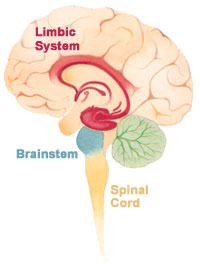The prefrontal is in charge of do not allow us taking risks but in teenagers it is still developing that is the reason for that an adolescent takes more risks than child and adults do.
In conclusion adolescence is the period of
human´s life when the brain is very malleable and adaptable. It is the perfect
time to learn new things and humans can strengthen the synapses in nerve cells.
So you do not have to be worried about moody adolescents it is just part of the
opportunity for education and social development.
REFERENCES
Leijenhorst L; Zanolie K; Van
Meel C; Westenberg M;
Rombouts S; Crone S. (2009) “What Motivates the
Adolescent? Brain Regions Mediating Reward Sensitivity across Adolescence” http://cercor.oxfordjournals.org/content/20/1/61.full
Bava, S; Tapert, S (2010). “Adolescent
Brain Development and the Risk for Alcohol
and Other Drug Problems” http://download.springer.com/static/pdf/314/art%253A10.1007%252Fs11065-010-9146-6.pdf?auth66=1387539085_f2cf7c7548ebf1d1d75bcaf32f2118f0&ext=.pdf
Sowell, E; Thompson, P; Holmes, C; Jernigan,
T; Toga, A (1999). “In vivo evidence for
post-adolescent brain maturation in frontal and striatal regions” http://www.loni.ucla.edu/~esowell/nn1099_859.pdf
Spear, L (2000). “The adolescent
brain and age-related behavioral manifestations” http://faculty.weber.edu/eamsel/Classes/Child%203000/Adolescent%20Risk%20taking/Lectures/3-4%20Biological/Spear%20LV%20%20(2000).pdf
Blakemore,S; Choudhury, S (2006) “Development of the adolescent brain: implications for
executive function and social cognition” http://onlinelibrary.wiley.com/doi/10.1111/j.1469-7610.2006.01611.x/abstract?deniedAccessCustomisedMessage=&userIsAuthenticated=false
Nosarti, C; Mazin, H; Asady, A; Frangou, S;Stewart, A; Rifkin, L and Murray, R (2002) “Adolescents who were born
very preterm have decreased brain volumes” http://brain.oxfordjournals.org/content/125/7/1616.full
Chiron,C;
Raynaud,C; Zilbovicius, B; Laflamme, L;
Masure, M; Dulac, O; Bourguignon, M and Syrota, A (1992) “Changes in Regional Cerebral Blood Flow DuringBrain Maturation in
Children and Adolescents” http://jnm.snmjournals.org/content/33/5/696.full.pdf


No hay comentarios:
Publicar un comentario